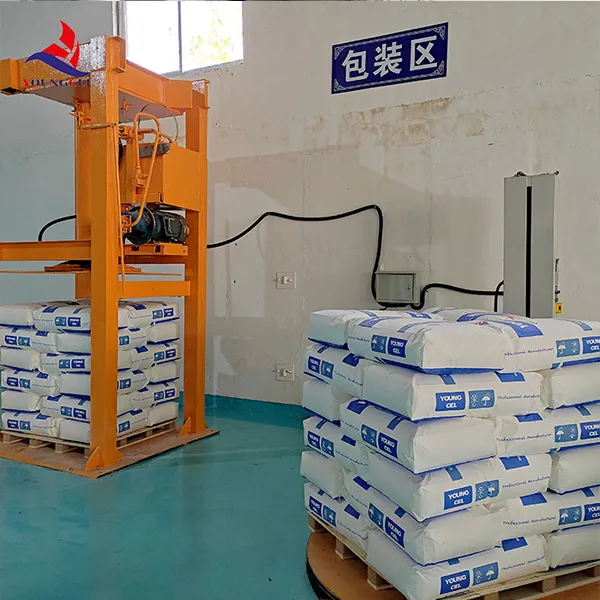Understanding Cellulose Methyl Structure, Properties, and Applications
Cellulose methyl, often referred to as methylcellulose, is a derivative of cellulose, the most abundant organic polymer on Earth. Cellulose itself is a natural polysaccharide composed of glucose molecules linked by β(1→4) glycosidic bonds. This biopolymer forms the structural component of the cell walls of green plants, contributing to their rigidity and strength. The transformation of cellulose into methylcellulose involves the substitution of hydroxyl groups in the cellulose molecule with methoxy groups (-OCH₃), resulting in a compound with distinct properties and an array of applications.
Structure and Synthesis
The synthesis of methylcellulose typically involves treating cellulose with methyl chloride or dimethyl sulfate in the presence of a strong base. The degree of substitution (DS), which indicates how many of the hydroxyl groups have been replaced by methoxy groups, can vary, leading to methylcellulose with differing solubility and viscosity characteristics. A higher degree of substitution often results in lower solubility in water, while methylcellulose with a lower DS is more soluble. This tunable property makes methylcellulose an incredibly versatile material, suitable for various formulations.
Properties
Methylcellulose is characterized by its unique combination of properties. It is a white, odorless powder that is hygroscopic, meaning it can absorb moisture from the air. When mixed with water, methylcellulose forms a gel-like solution, which is temperature-responsive; it becomes more viscous as temperature increases, a behavior referred to as thermoreversibility. This property allows for its application in food and pharmaceutical formulations, where it can serve as a thickener, emulsifier, or stabilizer.
Additionally, methylcellulose is non-toxic and can form a biodegradable film, which enhances its appeal in environmentally friendly applications. Its ability to create a barrier can help in moisture retention and controlled release of active ingredients.
Applications
cellulose methyl

The applications of methylcellulose are diverse and span various industries
1. Food Industry In food products, methylcellulose is used as a thickener, emulsifier, and stabilizer. Its gelling properties contribute to the texture and mouthfeel of products such as sauces, dressings, and ice creams. In gluten-free baking, methylcellulose can help mimic the structural properties of gluten, improving the texture of baked goods.
2. Pharmaceuticals Methylcellulose is widely employed in the pharmaceutical industry as a binder in tablet formulations, a coating agent, and a controlled-release agent for drugs. Its gel-forming ability is particularly beneficial in formulations where a sustained release of medication is desired.
3. Cosmetics In the cosmetics industry, methylcellulose is utilized in creams, lotions, and gels as a thickening and stabilizing agent. It helps enhance the texture and spreadability of cosmetic products, making them more pleasant for consumers.
4. Construction Methylcellulose is also used in construction materials, such as tile adhesives and plasters, where it improves workability and reduces water loss. Its water-retaining properties contribute to the durability and longevity of these materials.
5. Biomedical Applications In the biomedical field, methylcellulose finds use in tissue engineering and drug delivery systems. Its biocompatibility makes it suitable for creating scaffolds that support cell growth and tissue regeneration.
Conclusion
Methylcellulose serves as an excellent example of how a natural polymer can be modified to create a compound with enhanced properties and functionalities. Its wide-ranging applications in food, pharmaceuticals, cosmetics, and construction industries underscore its importance as a versatile ingredient. As researchers continue to explore the potential of methylcellulose, its role in innovative formulations and sustainable alternatives is likely to expand, positioning it as a key player in various advanced material applications. With its biodegradable nature and safety profile, methylcellulose represents not only an advancement in polymer chemistry but also a step toward more sustainable industrial practices.
-
Rdp Powder: Key Considerations for Wholesalers in the Building Materials IndustryNewsJul.08,2025
-
Key Considerations for Wholesalers: Navigating the World of Hpmc - Based ProductsNewsJul.08,2025
-
Hpmc Detergent: Key Considerations for WholesalersNewsJul.08,2025
-
Key Considerations for Wholesalers: China Hpmc For Tile Adhesive, Coating Additives, Concrete Additives, and MoreNewsJul.08,2025
-
Crucial Considerations for Wholesalers: Navigating the World of Construction MaterialsNewsJul.08,2025
-
Key Considerations for Wholesalers Sourcing Additive For Cement, Additive For Concrete, Additive For Putty from Additive Manufacturer Shijiazhuang Gaocheng District Yongfeng Cellulose Co., Ltd.NewsJul.08,2025




